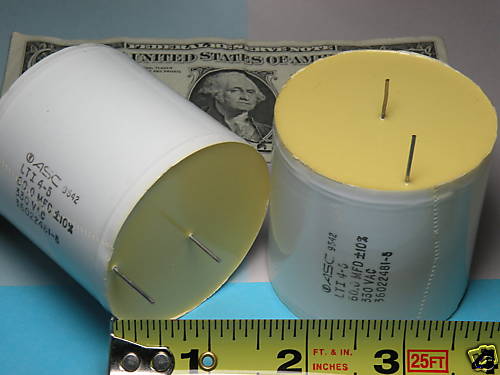I couldn't help myself, I had to buy these:

four metalized polypropylene 60uF caps, 330VAC 2" x 2".....they were <$5 each....
So now I can make my electrolytic less (ELno) amplifier a reality!
He still has 9 of these left:

3.5" OD! 40uF but almost $15 each...
ebay 170369838377
four metalized polypropylene 60uF caps, 330VAC 2" x 2".....they were <$5 each....
So now I can make my electrolytic less (ELno) amplifier a reality!
He still has 9 of these left:
3.5" OD! 40uF but almost $15 each...
ebay 170369838377

Comment